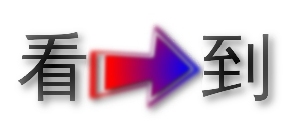The Mandarin complement of result: detailed explanation
Complements are often the trickiest aspect of Mandarin Chinese grammar for learners. This article goes into detail about the result complement (also known as the complement of result, or the resultative complement), covering its purpose, use and structure.
What is the result complement for?
The Mandarin result complement announces the result or completion of an action.
This might seem similar to the use of the degree complement to describe the state of things after the action of a verb or adjective. The difference is that the degree complement is about assessing the situation, whereas the result complement is more basic and confirms whether a verb is completed successfully or not.
This is necessary because most Mandarin verbs do not indicate the result. In English we can differentiate between the concepts of ‘to see’ and ‘to look’ using different verbs; they either include the result (seeing) or do not (looking).
Mandarin verbs are usually of the ‘to look’ variety. If you want to express seeing, you need a result complement.
What the result complement looks like
In its basic form, the result complement forms a two-character compound including the verb. For example, a common second character is 到 (dào):
看到 (kàndào): to see
听到 (tīngdào): to hear
买到 (mǎidào): to buy (successfully complete the purchase)
In these examples, 到 indicates that the action was completed successfully. It arrived at its destination.
Only verbs and stative verbs can form resultative complements. The majority of these are single characters, but some are disyllabic, creating longer compounds for the result complement. For example:
看清楚 (kànqīngchu): to see clearly (to look with the result of clearly perceiving the object)
Negating the result complement
Negating the result complement is fairly straightforward. The compound is left unchanged, and is negated as a normal verb with 不 or 没. For example:
我没看清楚。 (Wǒ méi kànqīngchu.): ‘I did not see clearly.’
A quick summary of the result complement
- Whether a verb was completed or not
- Whether a verb resulted in its logical conclusion
- Result complement compounds are treated as verbs in the sentence.
- Result complement compounds cannot be broken up.

